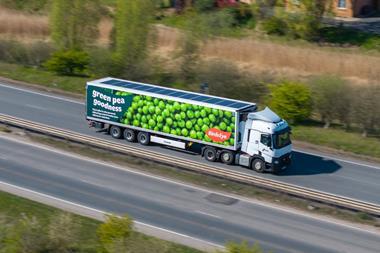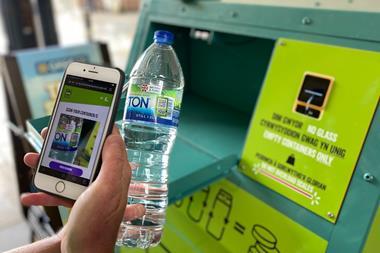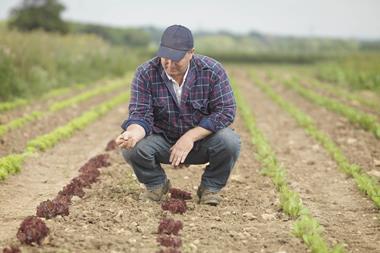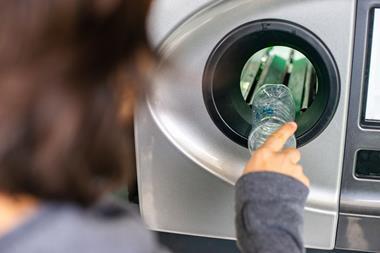The amount of household food waste saved from landfill since the launch of the Courtauld Commitment in 2005 - the vast majority of it “good enough to eat” - would fill Wembley stadium, Wrap boasted in its last progress report, covering the industry’s performance in the first of the two years set for Phase 2 targets.
But with final figures, to be published this autumn, expected to show that reductions pledged under Phase 2 will be exceeded, environmentalists are asking why the Phase 3 commitments, announced last week are so much less ambitious.
Phase 3 includes new voluntary pledges on three areas - food waste, supply chain and packaging - but the commitments from retailers and suppliers are far less onerous.
Take food waste. It’s already been cut by 3% in the first year of Phase 2, and a two-year target of 4% is expected to be smash. So why is the three-year target for Phase 3 calling for a 5% reduction? “Wrap has done a good job considering this is a voluntary agreement,” says Tristram Stuart, leading food waste author. “But the intransigence and lack of ambition from the food and drink industry is shocking, especially after achieving far greater reductions.”
In the case of packaging the slowdown is even more pronounced. Once the key driver of Courtauld, the third phase targets a freeze rather than a reduction. Wrap says that “taking into account external influences”, this still represents a carbon reduction of 3% relative to anticipated sales volume increases, but the move represents a drastic scaling back compared with the previous phases of the deal, with Wrap figures covering 2010-2011 showing an 8.2% drop in greenhouse gas emissions against a 10% target across 2010-2012.
Fiona Dowson, senior sustainability adviser at the Forum for the Future - which advises Unilever and Sainsbury’s on sustainability issues - says: “Courtauld 3 will keep some momentum, but take a quick look at the supermarket shelves and it’s easy to see there is still significant scope to reduce packaging waste.”
The same is also true of the supply chain commitments. The latest projection for Courtauld 2 showed the signatories had already overseen a Year 1 reduction in their supply chain emissions of 8.8% against a two-year target of 5%. Courtauld 3 commits to a further fall between 2012-2015 of just 3%. Wrap again says that taking into account increased sales volumes, this target represents a reduction of 8%, but Stuart is not the only one left unimpressed.
“I think they can go a lot further and a lot faster,” says Dan Crossley, executive director of the Food Ethics Council. There are a “huge number of companies that aren’t involved” in Courtauld - just 45 have signed the latest agreement, compared with 53 that backed Courtauld 2 (see box).
Signatories
There are 45 signatories for Courtauld Phase 3 versus 53 for Phase 2. Who’s in? Who’s out?
- In: Aldi, Dawnfresh Seafood, Highland Spring, Kingsland Wines and Spirits
- Out: Dale Farm, Danone, Dairies, Ferrero, Findus, Kraft Foods UK, Kimberly-Clark, Miller Brands, Molson Coors, PLB Group, Robert Wiseman
Packaging rethink
“Some of the targets are on the surface lower than Courtauld 2,” admits David Bellamy, environment policy manager at the FDF, but the agreement is based on common sense rather than a lessening of ambition. “Our members felt further reducing the levels of packaging may undo all the good work,” he adds.
Research unveiled by Wrap in March claimed it was time to rethink the role of packaging, arguing many consumers were unaware of the role it plays in extending product life and reducing waste, and calling for “small changes in behaviour and continued innovation” rather than sweeping cutbacks.
Alice Ellison, environment policy adviser at the BRC, adds that the battle against waste is now “far more complex” than when Courtauld began, leaving the industry ill-equipped to tackle the key issues alone.
The BRC is calling for the government to launch more forward-looking and consistent policies for carbon emission and water reduction, and for EU regulations to be relaxed so more ‘wonky veg’ can be sold in stores.
In some areas, regulation is proving more of a driver of change than voluntary commitments. Hilary Ross, a partner at law company DWF, says spiralling landfill taxes, new packaging waste recovery laws requiring major increases in the proportion of recovery rates from companies, and recycling legislation on products including batteries and electrical goods, are all having an impact.
And allegations of foot-dragging are strongly denied by retailers. “We are more focused than ever on providing ways for our customers to make their food go further and waste less,” claims Stuart Lendrum, Sainsbury’s head of sustainable and ethical sourcing. “For example, through our recent Make Your Roast Go Further campaign we helped customers create two additional family meals from every Sunday roasting joint.”
“We have also changed freezing labels to say ‘freeze up until use-by date’ instead of ‘freeze on day of purchase’, and are changing our date-code labels to either ‘best before’ or ‘use by’ because we know customers are confused by ‘display until’ dates.”
It’s a Wrap?
As for Wrap, many believe it is fast approaching its own best-before date, with Defra, having already signalled an 11% cut in its funding earlier this year, currently reviewing the body’s value for money.
But while it admits its future is uncertain, Wrap denies Courtauld 3 would be a case of going out with a whimper. “e believe Phase 3 will be on a par and deliver £1.6bn of savings to companies, local authorities and consumers,” says head of food Andy Dawe.
Wrap’s last move could turn out to be the launch of pathfinders, involving key players such as Sainsbury’s, The Co-operative Group and Nestlé, looking at entirely new ways to tackle the industry’s environmental footprint.
The Product Sustainability Forum is examining areas like greenhouse gas emissions, product waste and water use of grocery products throughout their entire lifecycles, seeking to identify hotspots in the supply chain and areas where there can be big wins, rather than eking out increasingly diminished returns across those contentious broader targets. Phase 3 may prove not only to be too easy, but a sideshow.



















No comments yet